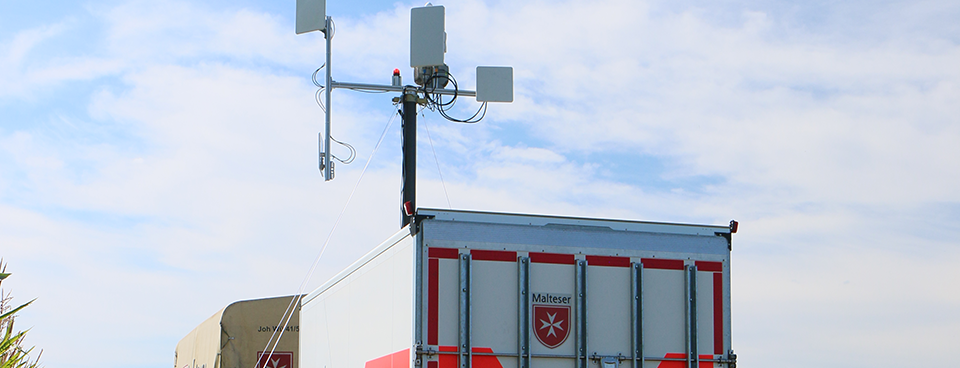Smart communication in the event of a disaster


A metal festival as a test environment for pioneering communication systems? What may seem unusual at first glance was a unique opportunity for the Fraunhofer FIT team and its partners from Friedrich-Alexander-Universität Erlangen-Nürnberg and Bonn-Rhein-Sieg University of Applied Sciences to test an innovative communication solution for public protection and disaster relief (PPDR) together with Malteser Hilfsdienst e.V. at the Summer Breeze Open Air 2024.
In major emergencies and when providing medical care at planned events, reliable communication between the medical services is essential. With the WiBACK wireless backhaul solution, Malteser was able to connect its control center and medical stations with each other and the Internet. The automatic configuration of the network and the uncomplicated set-up for nomadic use are important here. A 5G campus network was set up to realize network access on the festival site. By virtually separating the data traffic of different user groups through network slicing, different service qualities and prioritizations could be implemented. The network nodes could be reliably operated with solar panels and batteries, which emphasizes the potential for energy self-sufficient communication networks in crisis areas.
A central research objective of the project is the opportunistic use of the 5G campus spectrum. The use of this frequency band can be applied for, in order to operate a private 5G network. However, these frequencies are currently hardly utilized and could be made available to PPDR organizations. The approach of the BMDV-funded 5G Opportunity project: using spectrum sensing to identify free spectrum and use it opportunistically for the 5G networks of the PPDR organizations.
The findings from the field test will flow directly into further developments of the 5G Opportunity project and the WiBACK technology. The aim is to create an easy-to-use system operated by PPDR organizations themselves that enables the communication infrastructure to be restored quickly in the event of a disaster.
Your benefits
|